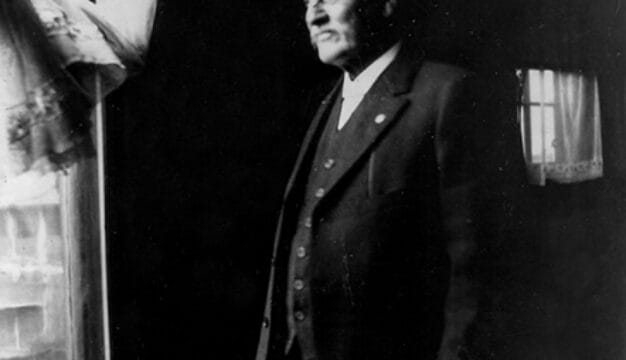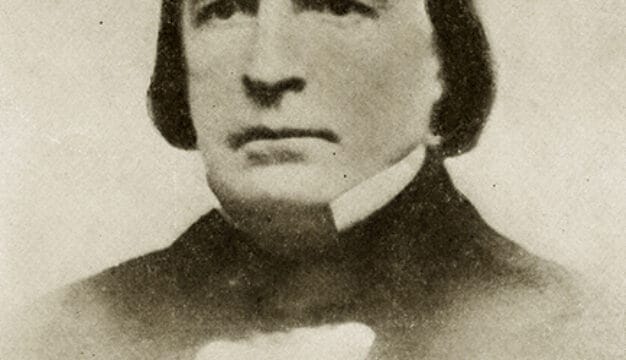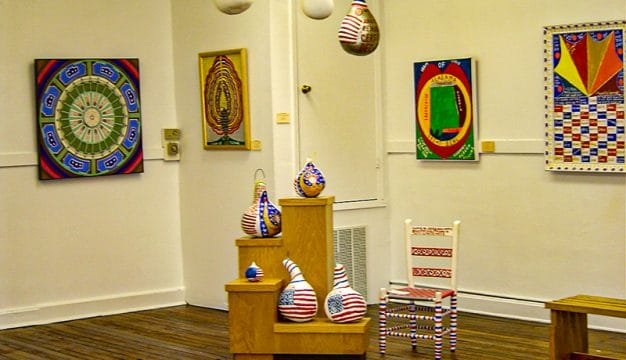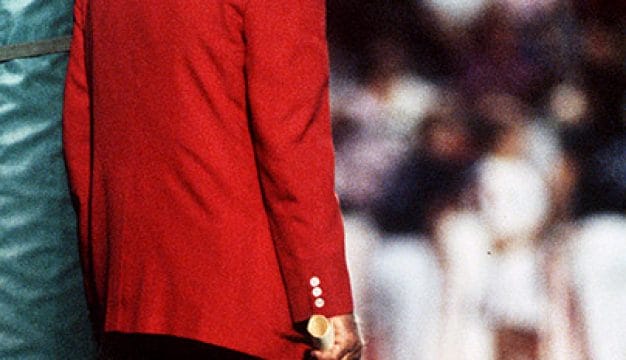Birmingham Zoo
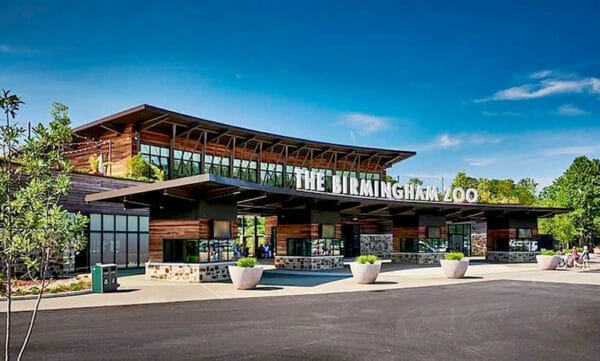 Birmingham Zoo Entrance
The Birmingham Zoo is a 122-acre zoological park in Birmingham, Jefferson County, that is home to more than 700 animals representing 230 distinct species from six continents. Originally founded in April 1955 as a quasi-private venture, the city of Birmingham took over the zoo in November of that year. In 1999, the zoo reverted again to a public-private partnership between the city of Birmingham, which owns the land, and the Birmingham Zoo, Inc. (BZI) organization, which staffs and runs the facility. Each year, the Birmingham Zoo welcomes nearly 600,000 visitors and is notable as the only zoo in the United States to house an all-male African elephant herd. The zoo hosts a variety of educational and outreach programs for children, adults, and educational groups throughout the year.
Birmingham Zoo Entrance
The Birmingham Zoo is a 122-acre zoological park in Birmingham, Jefferson County, that is home to more than 700 animals representing 230 distinct species from six continents. Originally founded in April 1955 as a quasi-private venture, the city of Birmingham took over the zoo in November of that year. In 1999, the zoo reverted again to a public-private partnership between the city of Birmingham, which owns the land, and the Birmingham Zoo, Inc. (BZI) organization, which staffs and runs the facility. Each year, the Birmingham Zoo welcomes nearly 600,000 visitors and is notable as the only zoo in the United States to house an all-male African elephant herd. The zoo hosts a variety of educational and outreach programs for children, adults, and educational groups throughout the year.
The first public zoo in the city of Birmingham consisted of a collection of exotic animals housed in the city’s Fire Station No. 3. After a time, the animals were kept in Magnolia Park until complaints from nearby neighbors led to the zoo’s closing. In 1911, a new zoological garden was opened on the edge of Avondale Park and two years later, the Avondale Zoo purchased a former circus elephant named Miss Fancy that soon became its star attraction. By 1934, the economic strain of the Great Depression on state and local finances forced local leaders to close the Avondale Zoo and sell Miss Fancy.
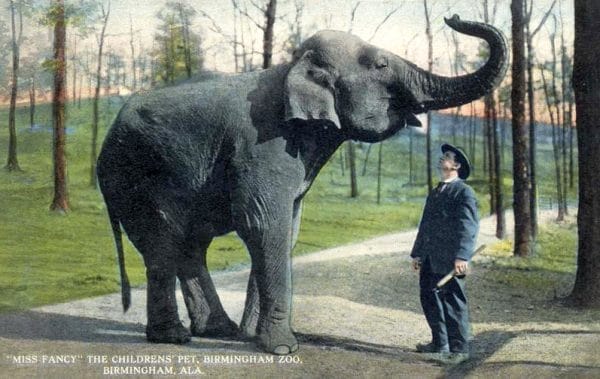 Miss Fancy Postcard
In 1946, interest in a local zoo was renewed when the local Junior Chamber of Commerce (Jaycees) formed a commission to create a zoo, eventually winning the support of Birmingham mayor James R. “Jimmy” Morgan. Efforts continued through 1949 when the new Birmingham Zoo Advisory Commission was established to plan, fundraise, and construct the new zoo on 50 acres of land in an area known as “Lane Park.” It was then an inactive pauper’s cemetery with thousands of unmarked graves that were never relocated. The budget for the new zoo was $250,000 and funds were raised through private donations, the sale of charter memberships, and donations from community and business leaders. Planned exhibits included Monkey Island, an elephant house, a bear habitat, an aviary, a snake pit, and a seal pool.
Miss Fancy Postcard
In 1946, interest in a local zoo was renewed when the local Junior Chamber of Commerce (Jaycees) formed a commission to create a zoo, eventually winning the support of Birmingham mayor James R. “Jimmy” Morgan. Efforts continued through 1949 when the new Birmingham Zoo Advisory Commission was established to plan, fundraise, and construct the new zoo on 50 acres of land in an area known as “Lane Park.” It was then an inactive pauper’s cemetery with thousands of unmarked graves that were never relocated. The budget for the new zoo was $250,000 and funds were raised through private donations, the sale of charter memberships, and donations from community and business leaders. Planned exhibits included Monkey Island, an elephant house, a bear habitat, an aviary, a snake pit, and a seal pool.
Despite the required $250,000 not being raised, excavation on the new site began in early May 1954, when it was decided to open the new exhibits piecemeal as funds were raised. On April 2, 1955, Monkey Island and a nearby duck pond opened as the first exhibits, both of which sparked interest in completing the zoo. By November of that year, the Birmingham City Commission assumed responsibility for the zoo and provided it with an initial annual budget of $663,000. For a time, the zoo was named the “Jimmy Morgan Zoo” in honor of the city’s mayor and a portrait bust of Morgan was placed near the popular Monkey Island. Morgan later urged that his name be removed, and it became known as the “Birmingham Zoo.” The injection of public funds eventually led to the completion of multiple exhibits, including the Lion House, Hoofed Animal Barn, Bear Moat, a new Primate House, and the Elephant House. In 1958, an exhibit known as the “Kiddie Zoo” was opened and included more than 100 baby animals and a miniature railroad. The railroad was the first of several the zoo has featured, including one that was leased to the Heart of Dixie Railroad Museum in Calera, Shelby County.
In 1960, the city of Birmingham pushed through a $1 million bond to fund the completion of the Giraffe House and Reptile House and a large flight enclosure for birds. As the funding needs for the zoo’s continuing expansion increased, the Birmingham Zoo began to charge admission for the first time in November 1962. The Birmingham Zoological Society was also established as the zoo’s official fundraising organization. The 1970s witnessed repeated failed attempts to raise enough money to renovate and expand large portions of the zoo, though a new entrance plaza and administrative office were constructed in 1979.
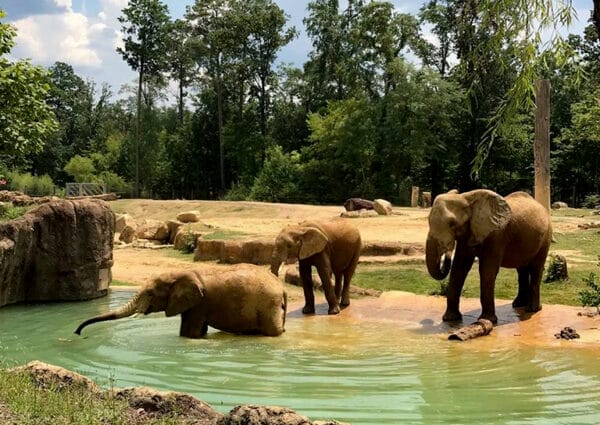 Birmingham Zoo Elephants
By the 1980s, the Birmingham Zoo was again beset by financial difficulties. By the late 1990s, the Birmingham Zoo lost its coveted accreditation by the Association of Zoos and Aquariums (AZA) and Birmingham mayor Richard Arrington Jr. sought to privatize the zoo. The nonprofit Birmingham Zoo, Inc. organization was formed and a public-private partnership established wherein the city owned the property and the BZI and its board staffed and ran the Birmingham Zoo; a partnership that continues today. After its founding, the BZI undertook an intensive 18-month review to identify and address the zoo’s major problems and also applied for and received nonprofit 501(c)(3) status from the Internal Revenue Service. In January 2001, the zoo undertook a major capital campaign to support its renovation. Because of these efforts, the zoo regained its AZA accreditation and stands as the only zoo in the state to be so accredited.
Birmingham Zoo Elephants
By the 1980s, the Birmingham Zoo was again beset by financial difficulties. By the late 1990s, the Birmingham Zoo lost its coveted accreditation by the Association of Zoos and Aquariums (AZA) and Birmingham mayor Richard Arrington Jr. sought to privatize the zoo. The nonprofit Birmingham Zoo, Inc. organization was formed and a public-private partnership established wherein the city owned the property and the BZI and its board staffed and ran the Birmingham Zoo; a partnership that continues today. After its founding, the BZI undertook an intensive 18-month review to identify and address the zoo’s major problems and also applied for and received nonprofit 501(c)(3) status from the Internal Revenue Service. In January 2001, the zoo undertook a major capital campaign to support its renovation. Because of these efforts, the zoo regained its AZA accreditation and stands as the only zoo in the state to be so accredited.
In April 2005, the $15 million Junior League of Birmingham-Hugh Kaul Children’s Zoo was completed but would later see additions with other new funding. It featured the Alabama Wild exhibit featuring otters, snakes, a stream with native fish, and a seasonal butterfly garden as well as the Alabama Barn exhibit housing animals commonly seen on Alabama farms. The centerpiece of the zoo was finished in 2010 with the opening of the Trails of Africa exhibit, which is designed to look like an African savannah and includes rhinos, hippos, and giraffes. Notably, it is the home of the only all-male African elephant herd in a U.S. zoo and provides these animals a more natural bonding environment, according to zoo officials. Other exhibits that were either renovated or newly constructed included the Kiwanis Giraffe Encounter in 2012 and the Barbara Ingalls Shook Black Bear Trail in 2015.
In the following decade, the Birmingham Zoo undertook its “Renew the Zoo Capital Campaign,” which includes three major phases of renovation and construction. The first was completed with the opening of Henley Park Event Lawn in 2017. The second was in June 2019 with the new Front Entrance Complex that includes a new entrance, large gift shop, membership office, Hugh Kaul Plaza, Altec/Styslinger Learning Center, sensory room, first-aid station, new rest rooms, administration offices, and event rental spaces. Phase 3 involves the renovation of the existing Predator Building, which will highlight Asian species such as the Malayan tiger, Komodo dragon, Sumatran orangutans, red pandas, and more.
 Birmingham Zoo Education Program
The zoo hosts a variety of summer and year-long educational and experiential programs including Zoo Camps for children, Preschool at the Zoo, and the Night Keeper Experience (which provides four days of hands-on classes exploring all aspects of caring for animals). The weekly Super Science Saturday programs allow children to learn the science behind the zoo’s animals, and the Zookeeper for a Day program enables children to spend the day shadowing and working with a Birmingham zookeeper. Outreach programs include the Zoo to You program, which brings educational programs to classrooms, assemblies, and career days/festivals; the Homeschool at the Zoo program for homeschooled students; and the Spire ZooSchool program that teaches Birmingham City School seventh-grade students about conservation. The Birmingham Zoo also hosts a Virtual Zoo program to provide teachers and students a variety of web-based resources for personal and classroom use.
Birmingham Zoo Education Program
The zoo hosts a variety of summer and year-long educational and experiential programs including Zoo Camps for children, Preschool at the Zoo, and the Night Keeper Experience (which provides four days of hands-on classes exploring all aspects of caring for animals). The weekly Super Science Saturday programs allow children to learn the science behind the zoo’s animals, and the Zookeeper for a Day program enables children to spend the day shadowing and working with a Birmingham zookeeper. Outreach programs include the Zoo to You program, which brings educational programs to classrooms, assemblies, and career days/festivals; the Homeschool at the Zoo program for homeschooled students; and the Spire ZooSchool program that teaches Birmingham City School seventh-grade students about conservation. The Birmingham Zoo also hosts a Virtual Zoo program to provide teachers and students a variety of web-based resources for personal and classroom use.
The Birmingham Zoo is open every day from 9:00 a.m. until 5:00 p.m. and is closed on Thanksgiving Day and Christmas Day. Tickets are $16 for adults, $11 for children ages 2-12, and $14 for Senior Citizens and Active Duty Military. It is located next to the Birmingham Botanical Gardens.
